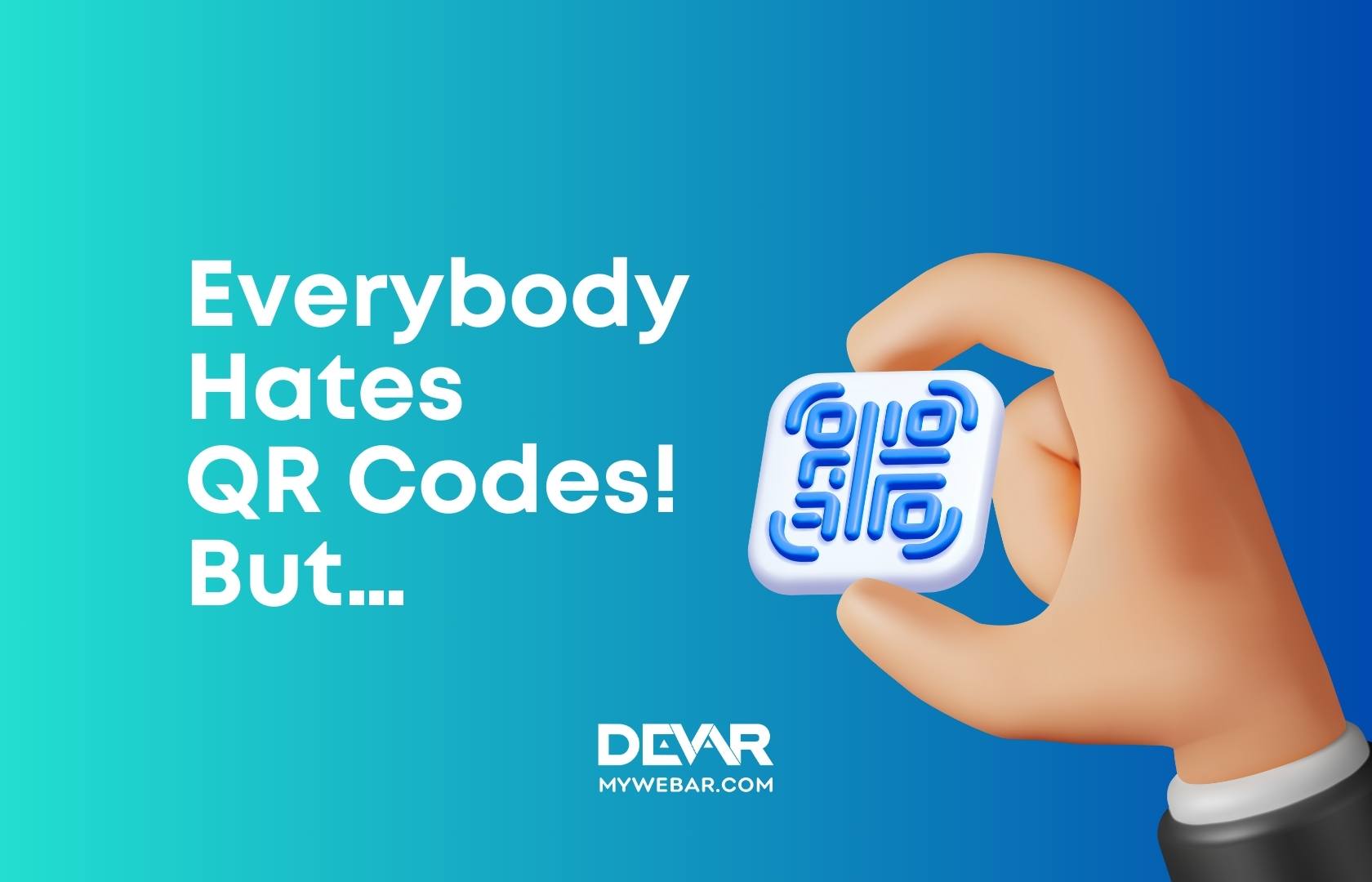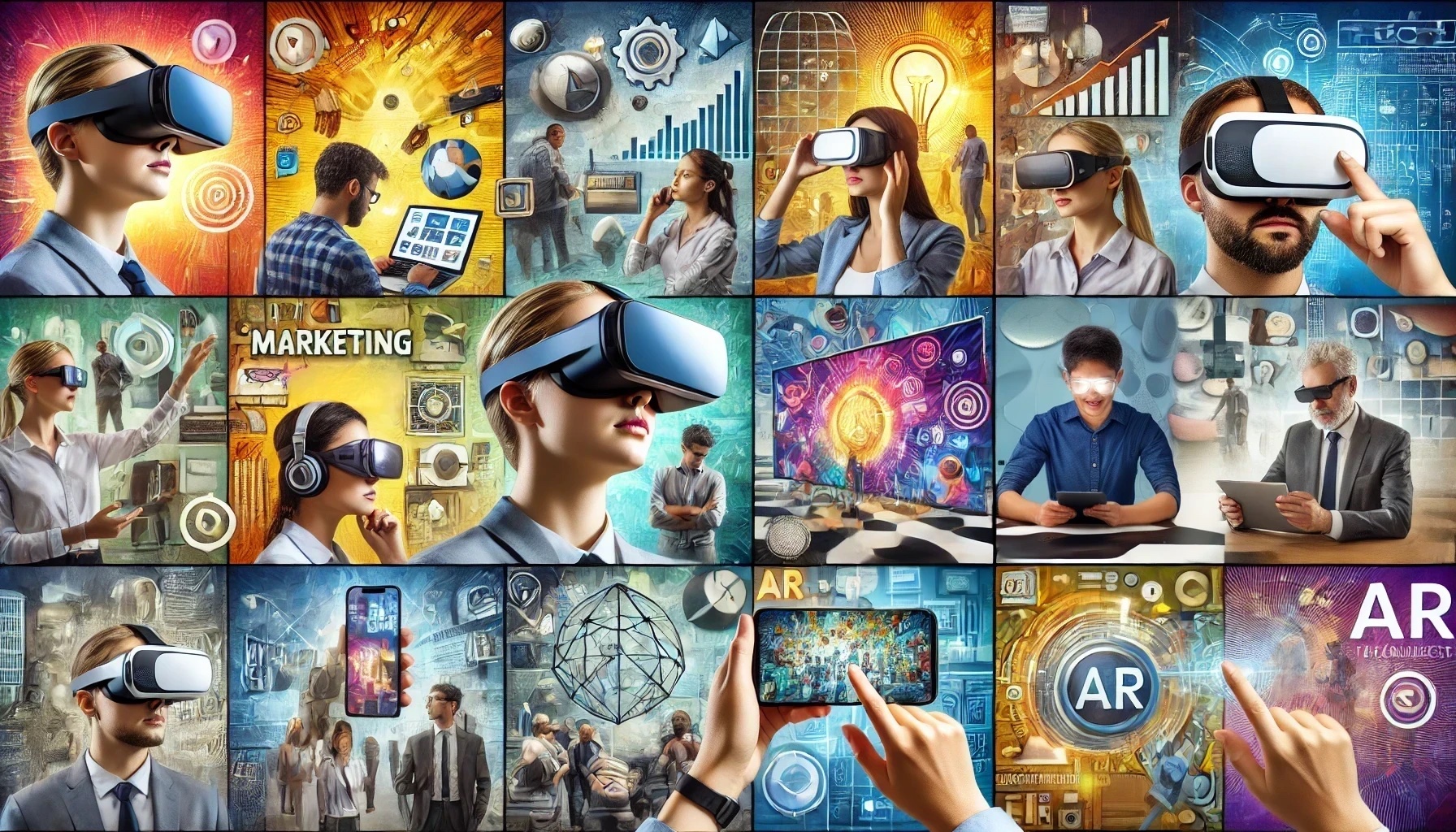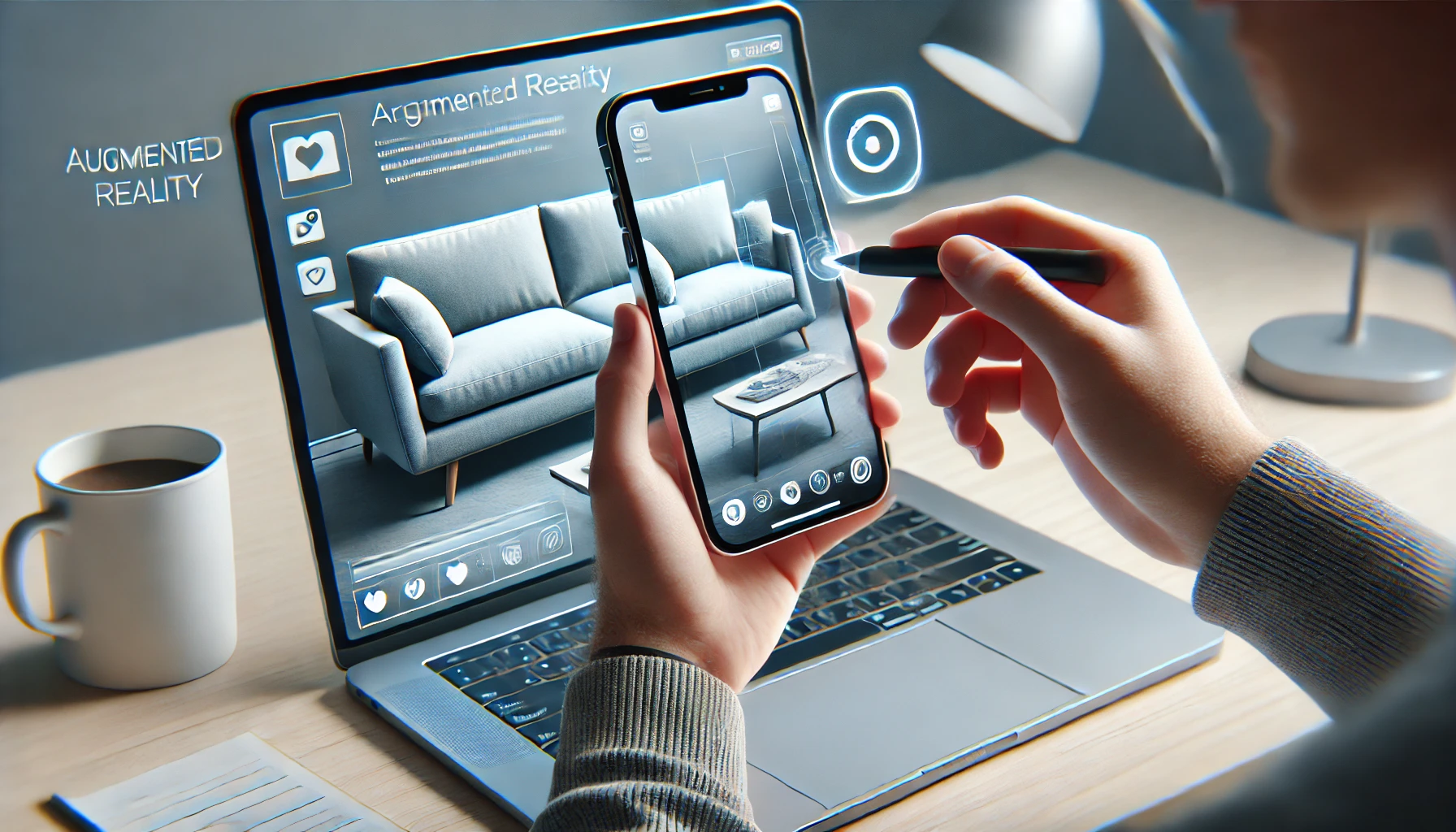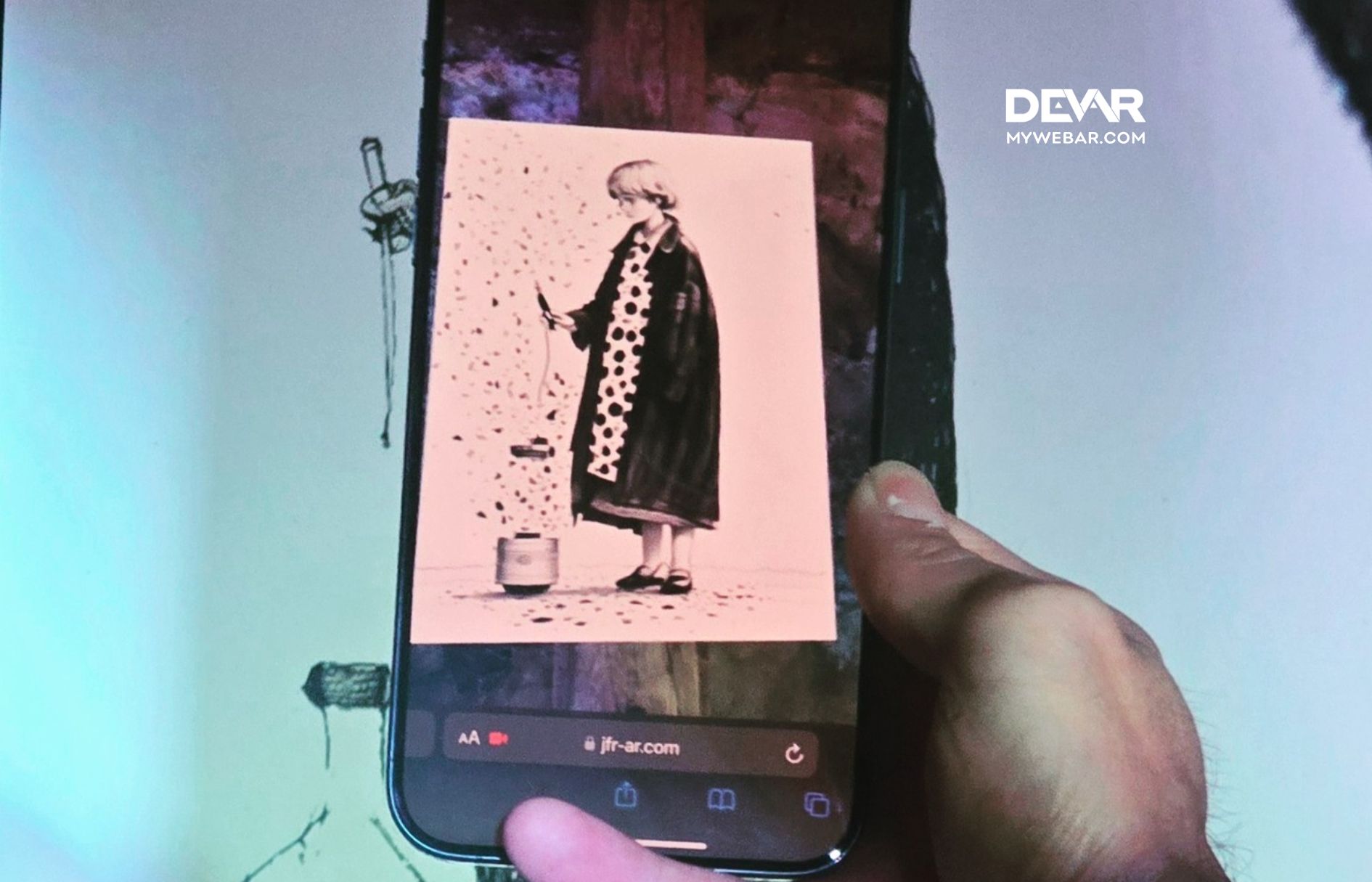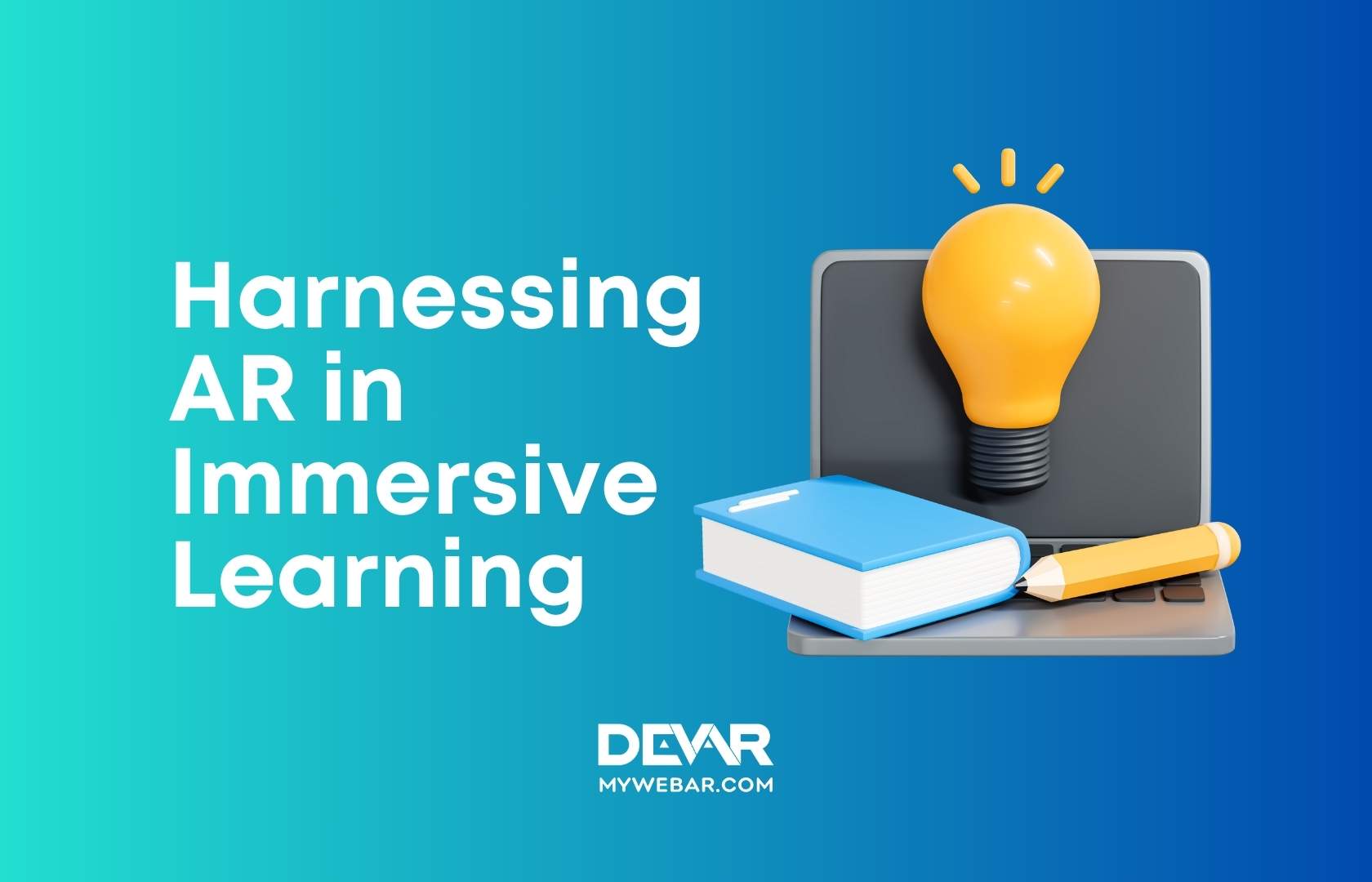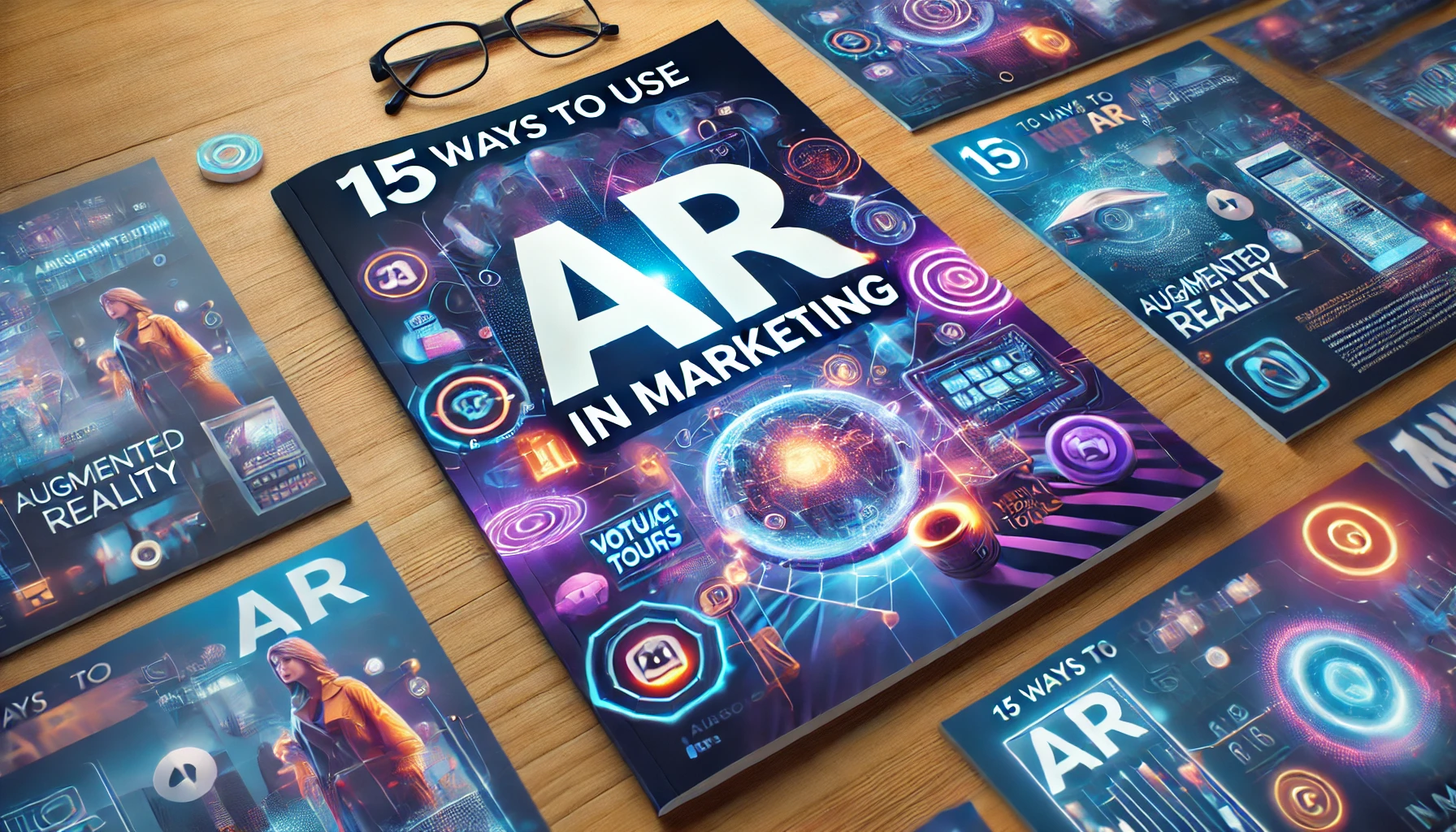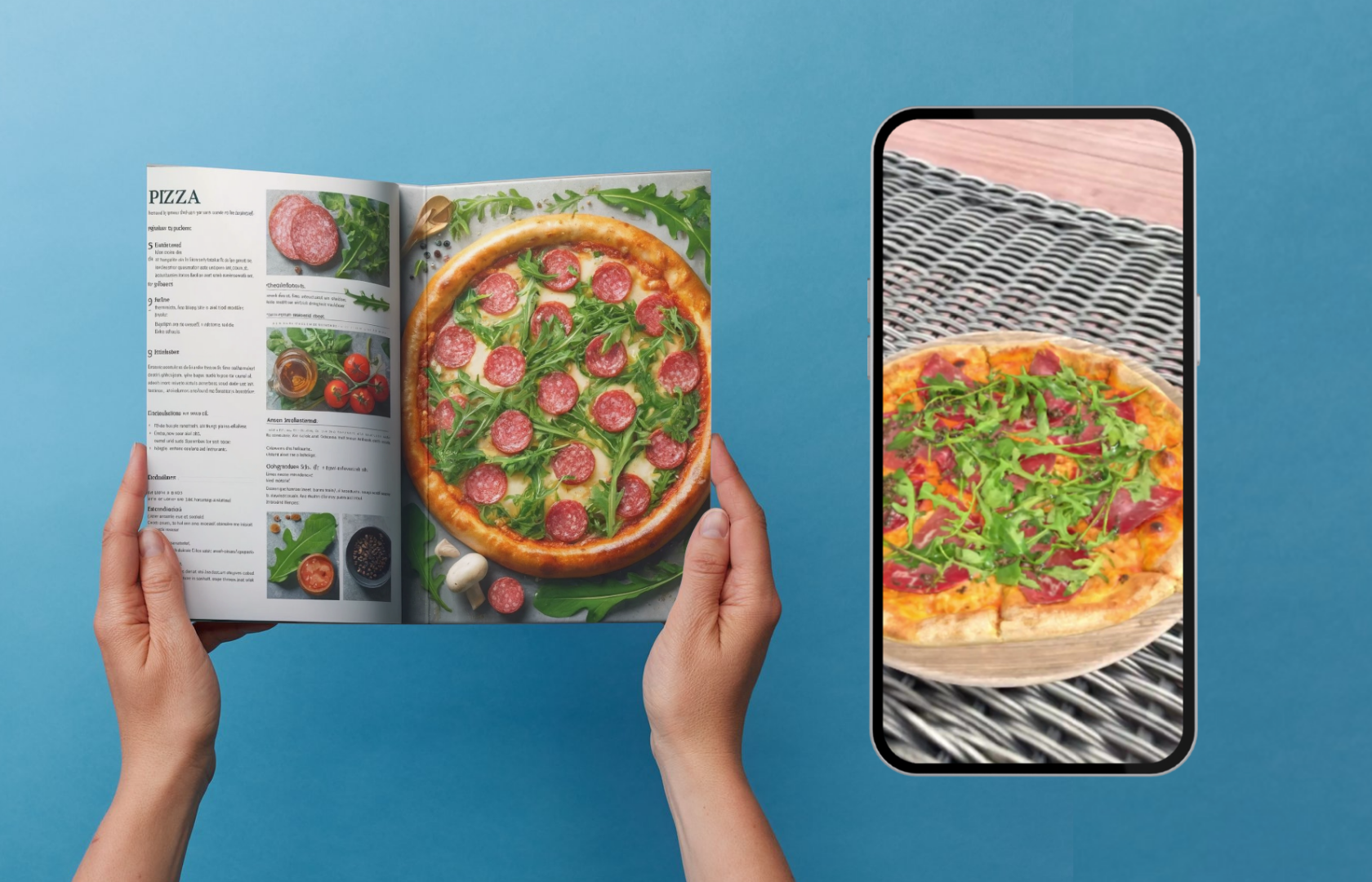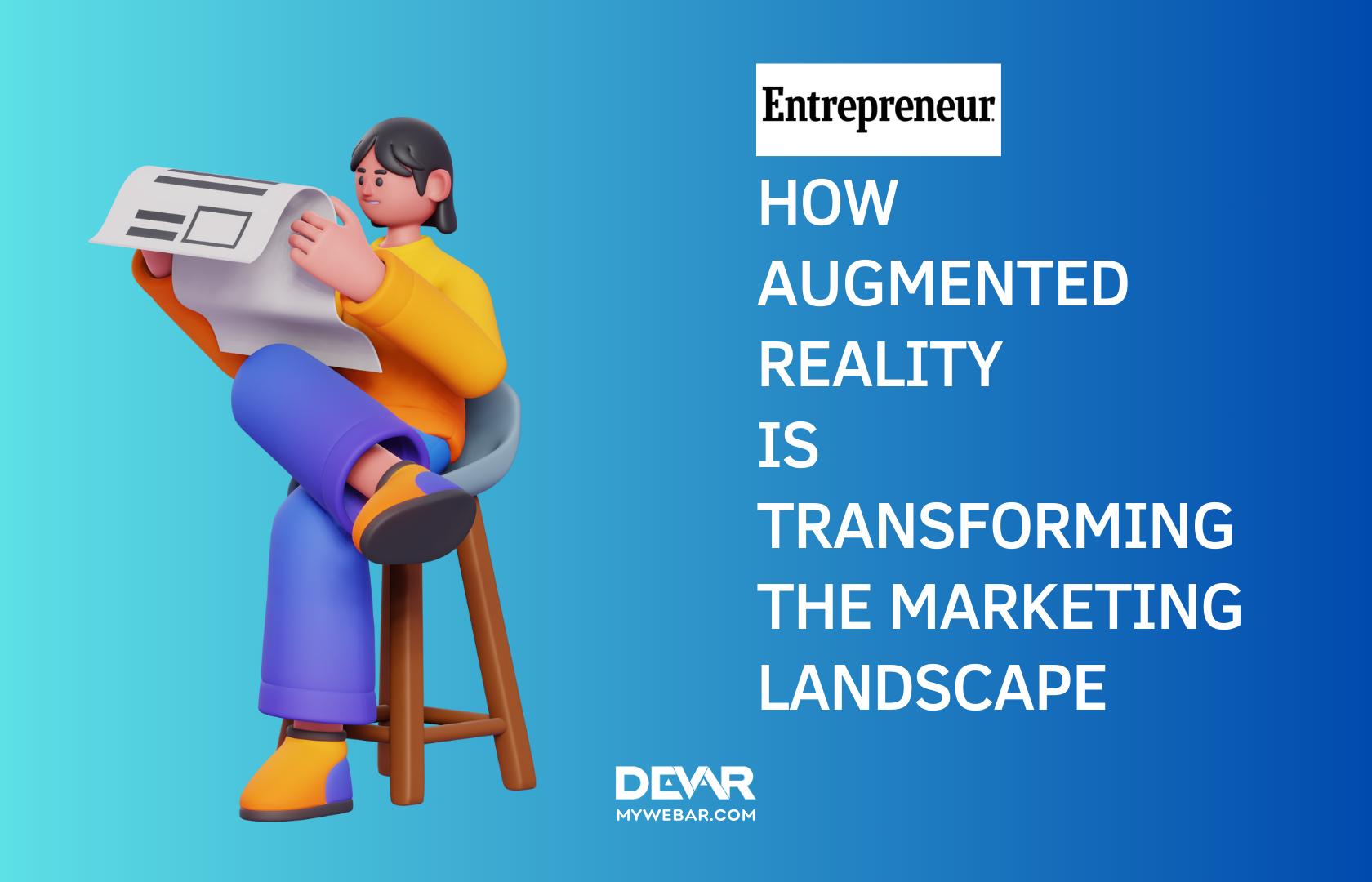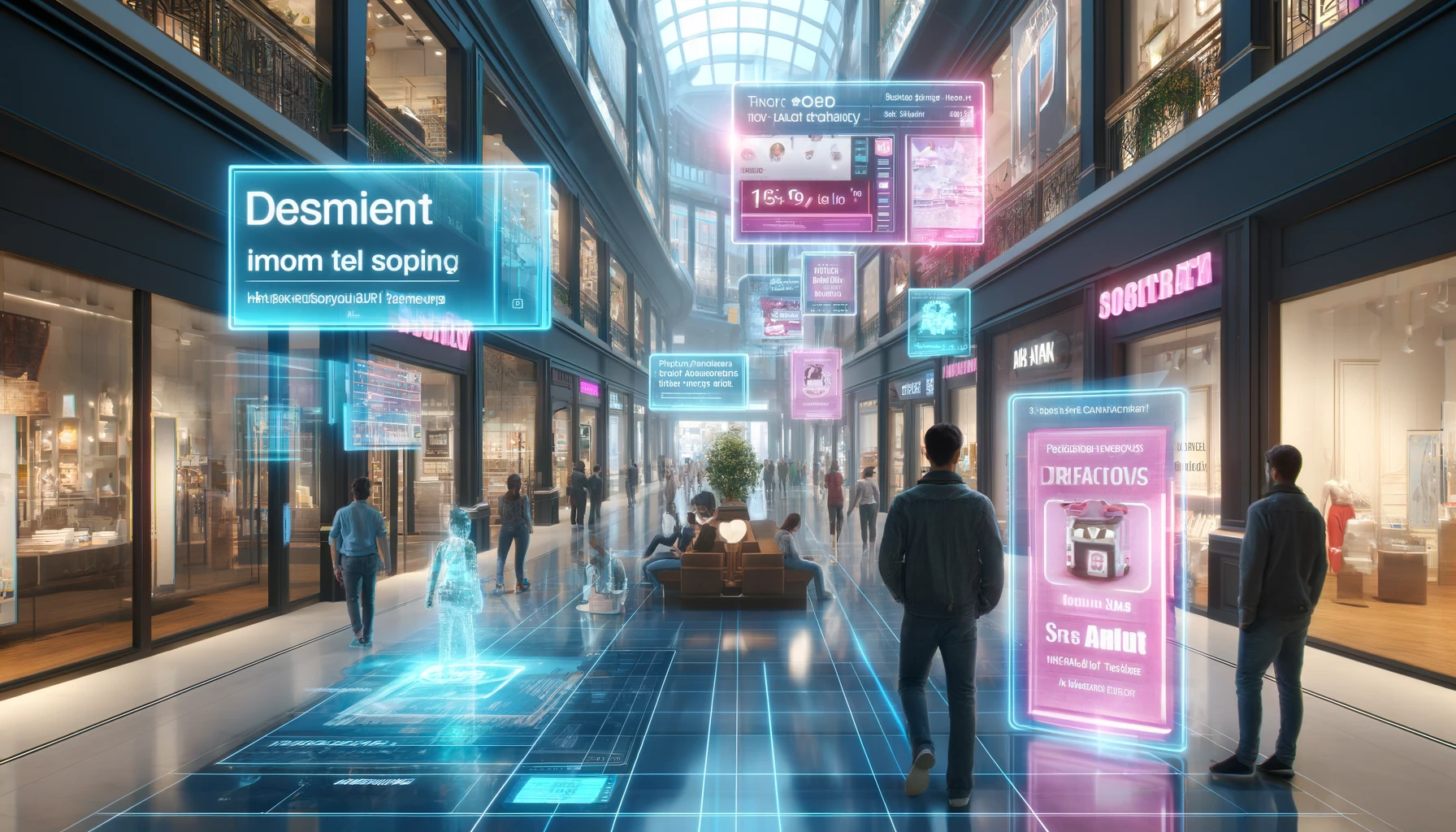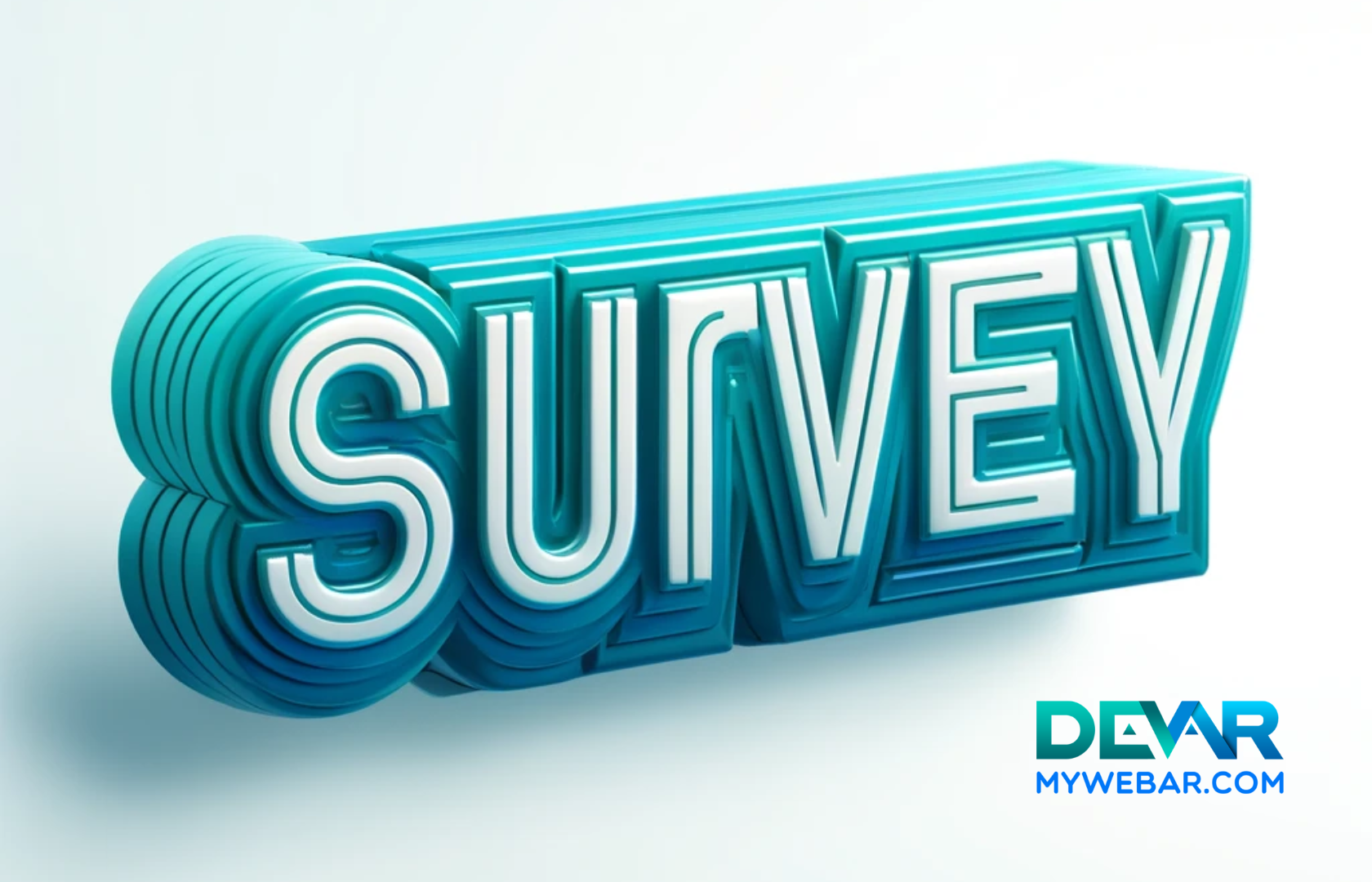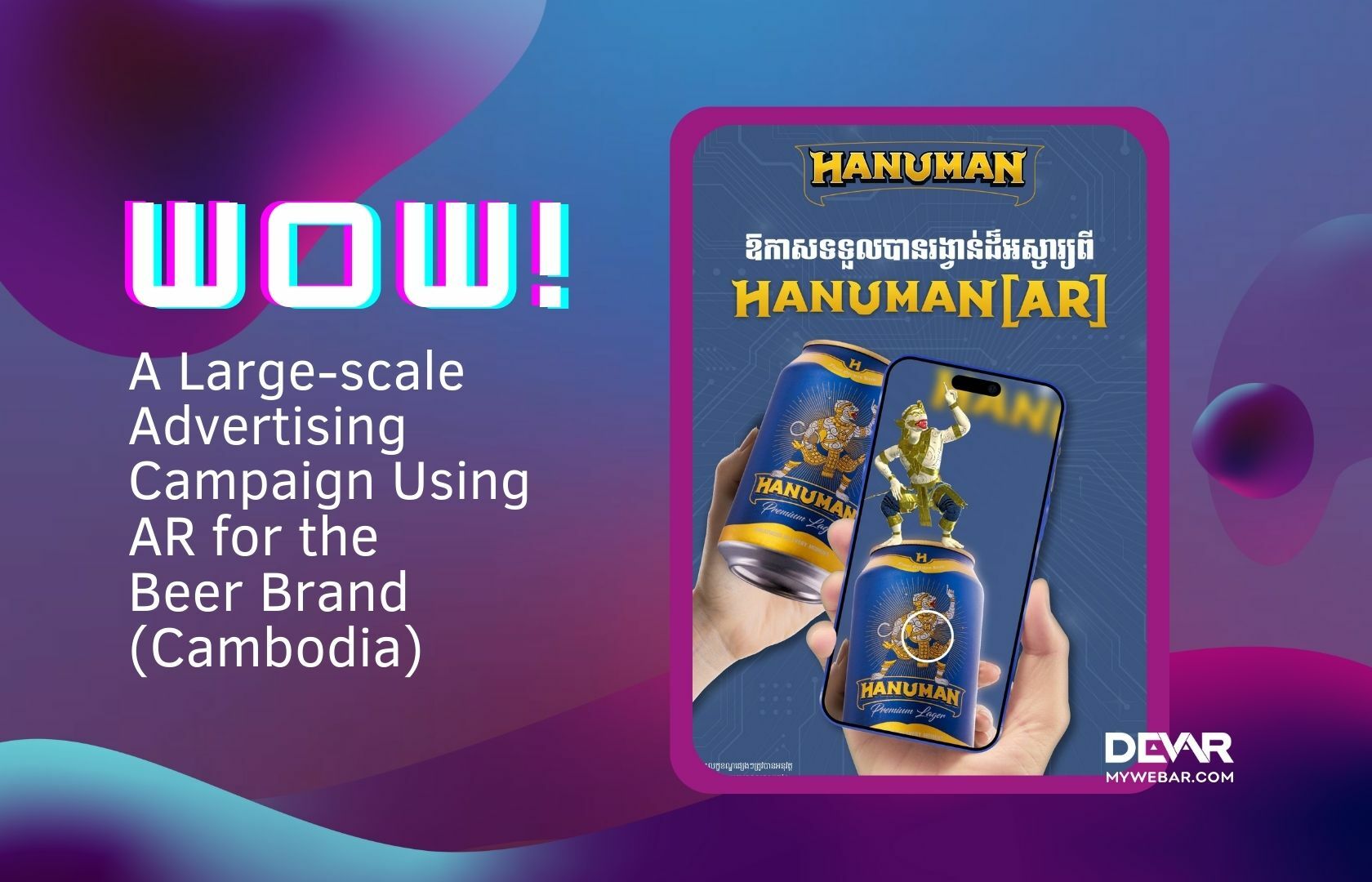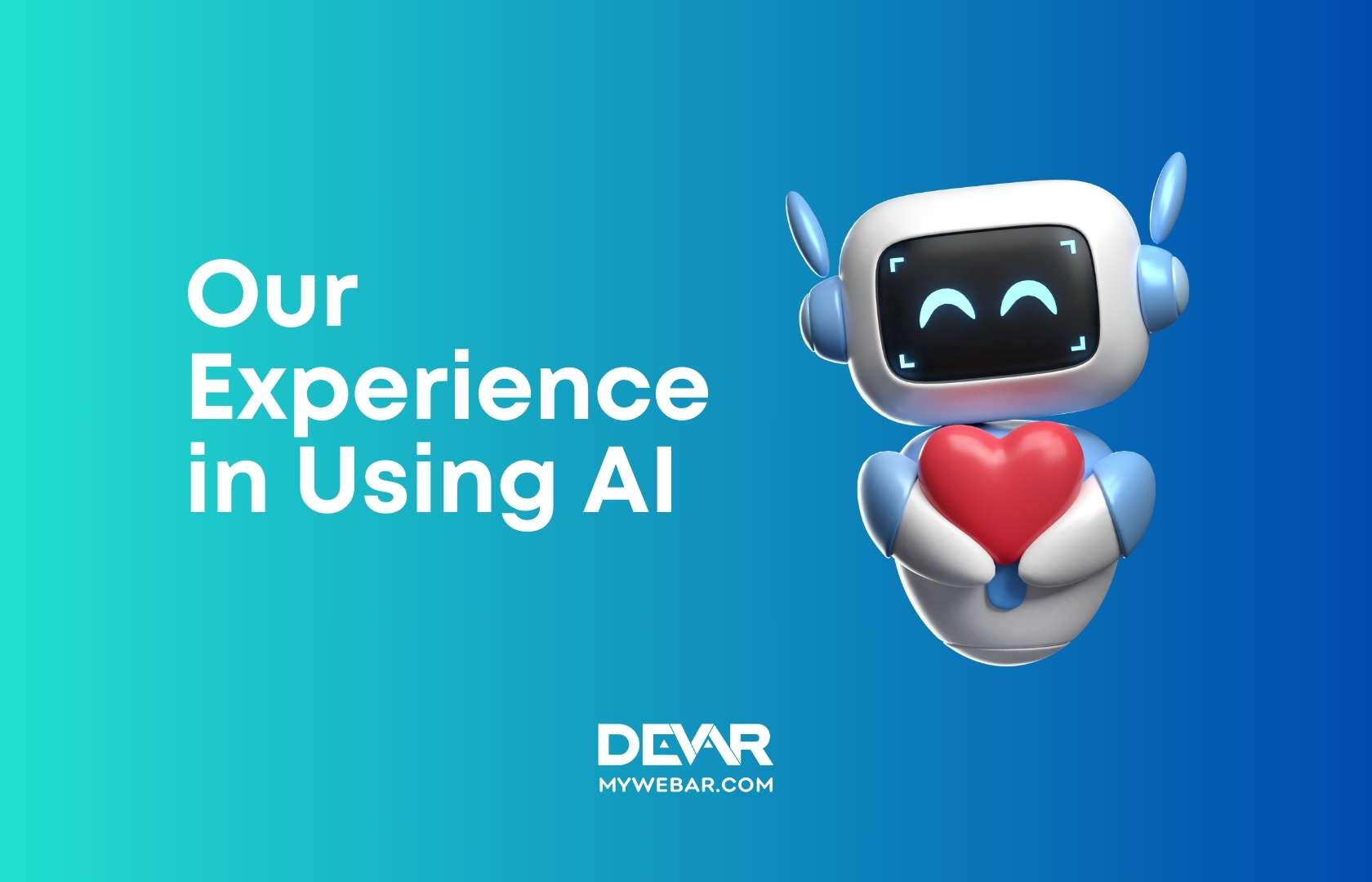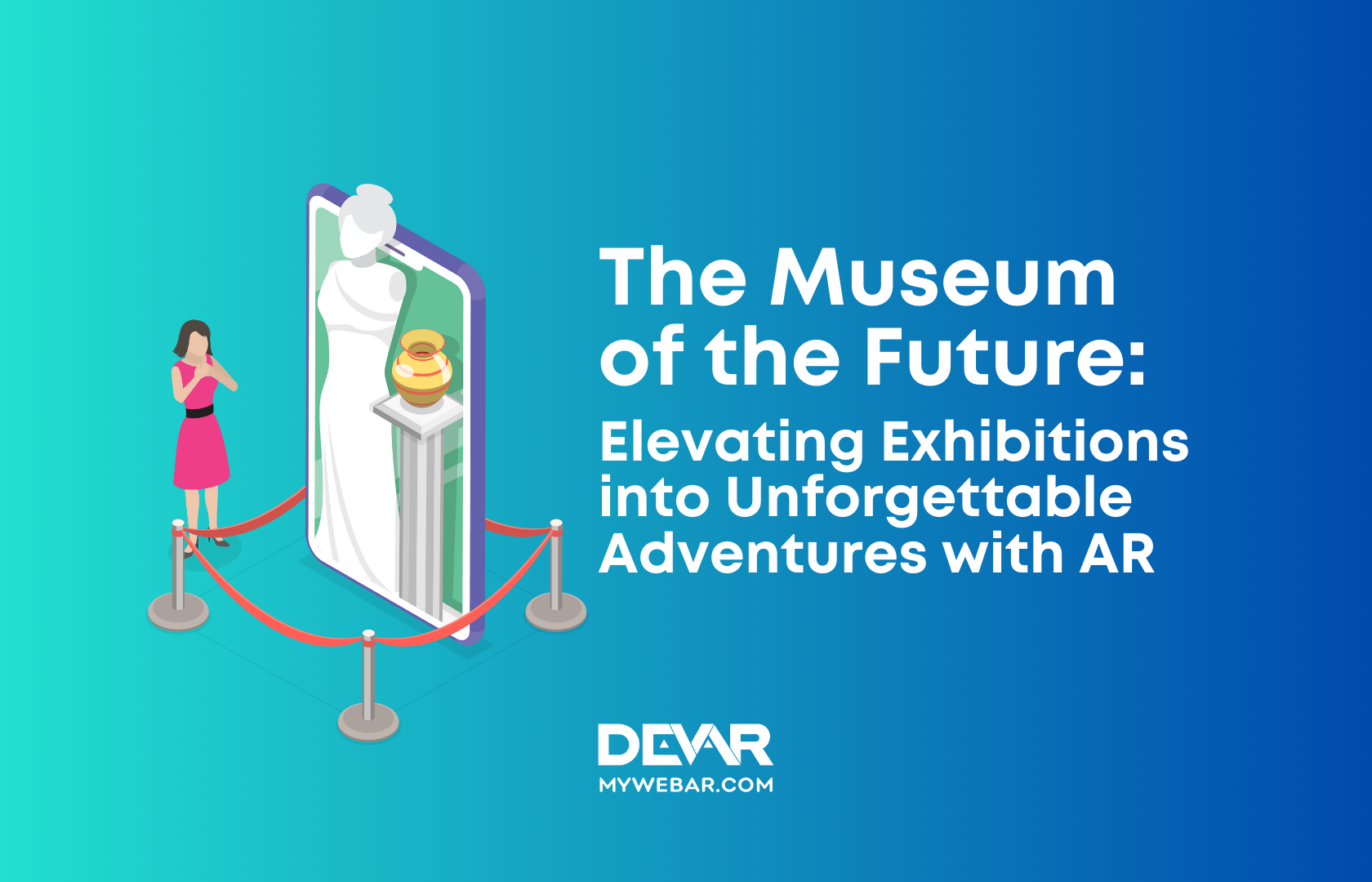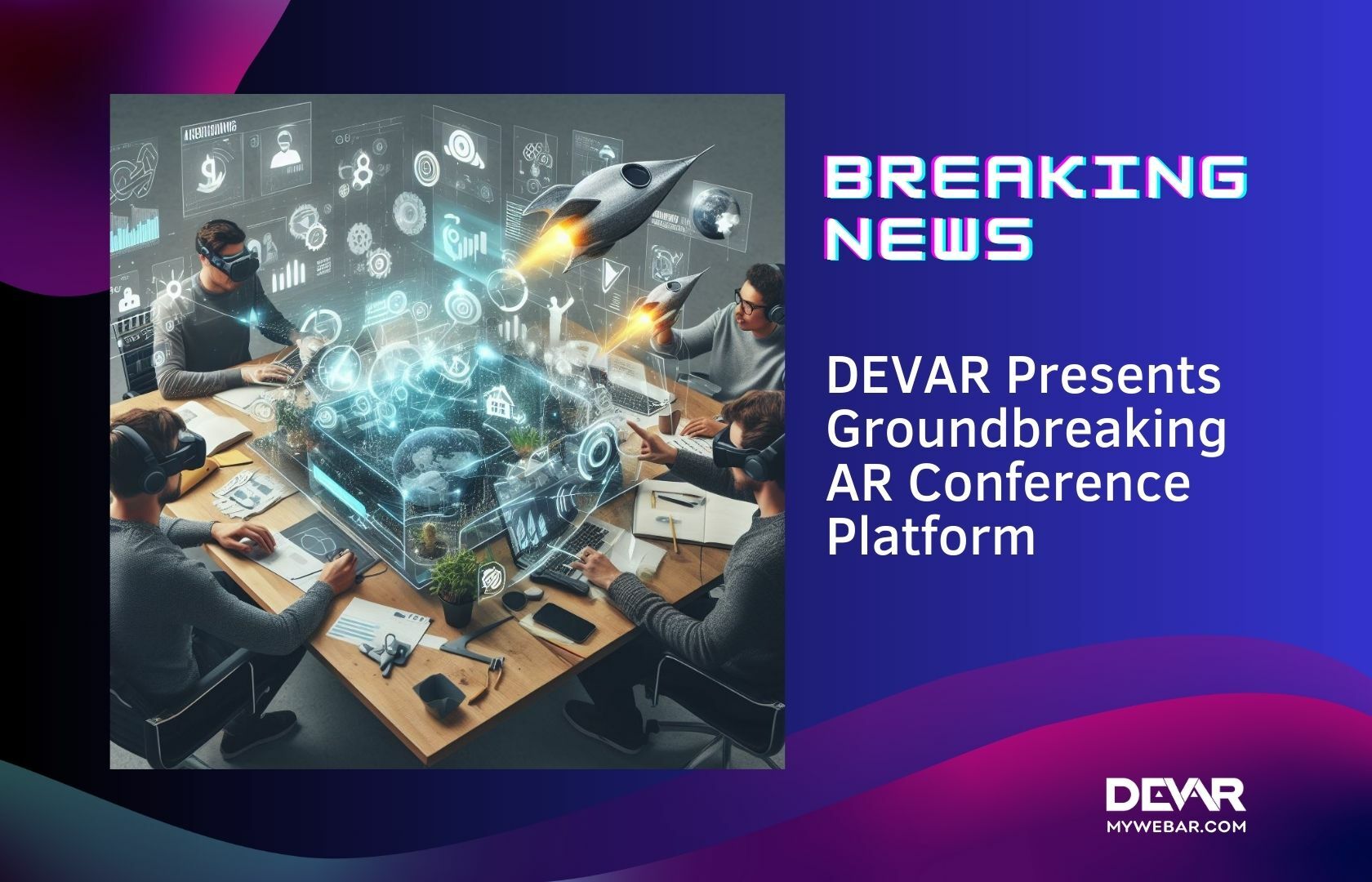This is the personal story of Sean Cooper, the creative director of a well-known marketing agency, the name of which, for understandable reasons, we cannot disclose.
In this article, Sean shares his impressions and experiences of interacting with QR codes and their application in everyday life. He also talks about how to take their usage to a completely new and useful level. For example, through good design and the use of augmented reality.
What it all started with…
The other day, I stopped by my favorite coffee shop and was surprised to discover that something had subtly changed. No, the interior remained the same. The staff, their uniforms, and even the background music were all the same. But what was missing was the vibrant menu that I was accustomed to.
In its place, dull black and white QR code squares adorned the coffee tables.
At that moment, I thought to myself, “Oh my God! How I despise these cursed QR codes!”
Because lately, they seem to be everywhere. On product packaging, on advertisement posters and flyers, in magazines, at bus stops, in the subway, and on public transportation. They are printed on tickets, in manuals, books, displayed on appliances, graffiti, and even on children’s toys!
In other words, while we were sleeping, eating, working, and entertaining ourselves ― in other words, living our usual, ordinary lives ― QR codes suddenly took over our familiar world. Just like the tables in my beloved café!
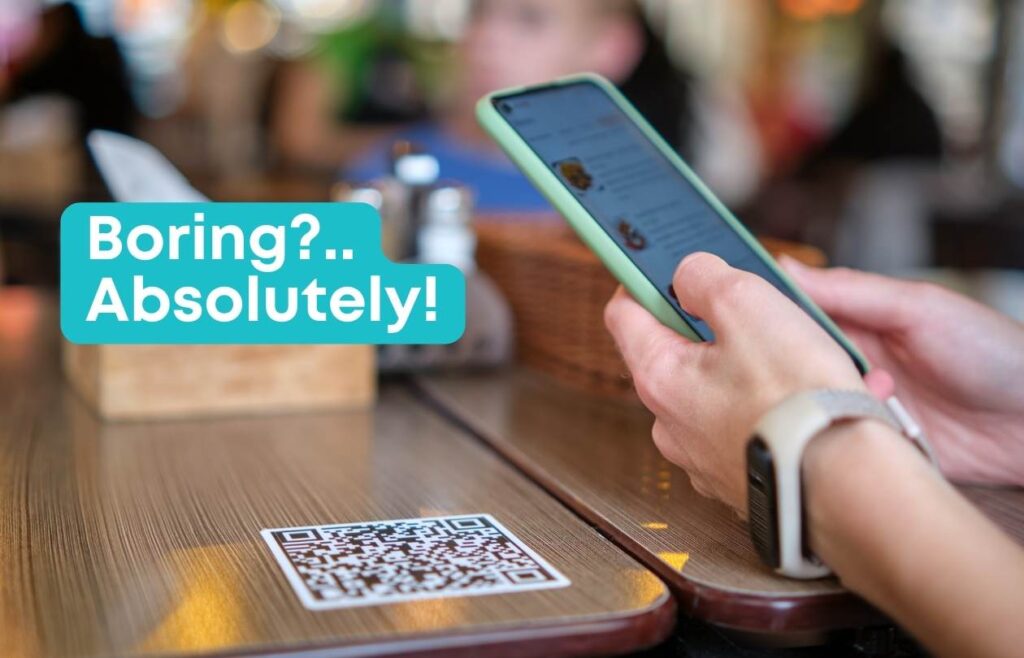
At first, I couldn’t shake off the annoyance. Thankfully, I knew the menu almost by heart, so I placed my order from memory, without stooping to interact with that darn encoded square.
As I left the café, I headed towards my office through the city park, hoping to calm down and gather my thoughts. But contrary to my expectations, the feeling of irritation didn’t subside; instead, it grew stronger.
I just couldn’t come to terms with the fact that they had so blatantly and unequivocally invaded my cozy and peaceful daily routine.
“For goodness sake!” I angrily thought. “All I want is my familiar menu and beautifully stylish product packaging that I interact with every day. Is that too much to ask? And why do we even need all these QR codes?”
By the time I reached the office, I had wound myself up so much that I felt even more irritated than when I left the café. Of course, this did not go unnoticed.
“Is something wrong, Sean?” Chloe Jamal, my friend and colleague in creative development, asked me. “You don’t look yourself today!”
“Well, no wonder!” I exploded. “I’ve been preparing myself for this.”
“For what?” Chloe genuinely wondered.
“For the fact that soon, instead of my face, there will also be a QR code displayed!” I replied.
In response, Chloe burst into laughter so lively that it actually made me feel a little better.
“Clearly, Mr. Grumpy,” she smiled. “Who would have thought! I didn’t know you were one of those.”
“One of those?” I asked with bewilderment.
“One of the neophobes,” Chloe shrugged as if it were self-evident. “It’s obvious, isn’t it?”
“A neophobe?” I asked again, feeling myself starting to boil. “What are you even talking about? You called me that for no reason, without explaining anything properly…”
“Oh, come on, Sean, it’s crystal clear: neophobia is the fear of anything new.”
“I don’t have any neophobia, alright?” I sincerely protested, feeling deeply offended. After all, I’m a creative director! My entire job, from beginning to end, is about coming up with something new. “I just simply can’t stand QR codes. And, if we’re being honest, they annoy everyone! So, don’t stand there looking smug and labeling people.”
Chloe pursed her lips and patiently waited for me to finish my tirade.
“Actually, I just wanted to say that it’s normal to be afraid of something new,” she quietly said. “It’s literally a protective mechanism built into us by evolution. So, there’s really nothing to be ashamed of. But since you don’t want to listen to me…” Chloe sighed playfully, “I guess I’ll go. I’ll wait until you cool down before discussing the new project with you.”
“Okay, just tell me already!” I couldn’t hold back.
“Fine, since you’re asking,” Chloe brightened up. “So, a long time ago, when people were still ancient and uneducated… Well, you know, living in caves, not drinking cappuccinos in the mornings, and not shopping online. These poor souls constantly faced various threats: wild animals, poisonous plants, and the lack of a stable Wi-Fi signal. In such conditions, it was necessary for them to avoid everything new and unknown in order to increase their chances of survival and continue their lineage.”
“An exquisite story,” I snorted skeptically. “And what, in your opinion, should it teach me?”
“It teaches us,” Chloe smiled, “that thousands of years have passed since then, and yet we still face the consequences of our distant ancestors’ fears. Even our psyche is designed in a way that simultaneously coexists with two opposing vectors. One is focused on stability, and the other on change and development.”
“Someone clearly watched ‘Discovery’ over the weekend,” I rolled my eyes.
“Oh, come on, Sean! Just admit that you like stability,” Chloe said.
“And what’s wrong with that?” I frowned. “Stability is practically synonymous with safety.”
“True. It’s peaceful and, in a sense, even relaxing. If it were up to us, we wouldn’t change anything in our lives at all. We would just adapt to new conditions and that’s it. Because it’s easier and safer. And this is a completely normal human reaction. But…”
“Of course, there’s always a ‘but’,” I grumbled. “Where would we be without it, right?”
“True. Otherwise, it wouldn’t be as interesting,” Chloe cheerfully winked at me. “Desiring stability and not wanting to change anything is a normal human strategy. But sometimes, it becomes impossible to stick to the old ways. Of course, denial, bargaining, anger… you know as well as I do how it goes. Change is very difficult. After all, the old and familiar order is already established and predictable, and changes bring chaos into life. We can’t control them, and that’s why we’re afraid.”
“Well, thank you for the lecture. Now I can cancel my weekly visits to the psychologist. But what do QR codes have to do with all this?”
“They annoy you because they’re not familiar to you. They’ve invaded your stable routine and caused a disturbance in it.”
“Bravo, Sherlock! Did you ever consider the thought that QR codes are just bulky, ugly things that at some point became mainstream? Not all changes lead to improvement.”
“Or maybe you’re just a perfectionist.”
“Or maybe you’re just labeling things.”
“Alright,” Chloe sighed. “Just try one thing. If it doesn’t help, I’ll apologize and we can drop this topic.”
“What thing?” I became wary.
“To reduce psychological tension, try studying the topic or question that irritates you.”
“Are you seriously suggesting that I read about QR codes?” I scoffed.
“Yep,” Chloe replied calmly. “Who knows, maybe you’ll find something interesting?”
“Well… that’s unlikely,” I remarked with doubt.
“You’ll have to,” Chloe chuckled. “Because our new project is directly related to this question.”
And what else was there for me to do, in your opinion? Of course, I sat down and thoroughly studied this question. Because, as Chloe said, I am quite the perfectionist (although I don’t always admit it).
What are these little squares?
In summary, QR codes, which stands for Quick Response code, are a type of barcode that can be scanned to quickly retrieve encoded information. They have a wide range of applications and offer a convenient way to access digital content or perform actions with just a scan from a smartphone or QR code reader.
But where did they come from?
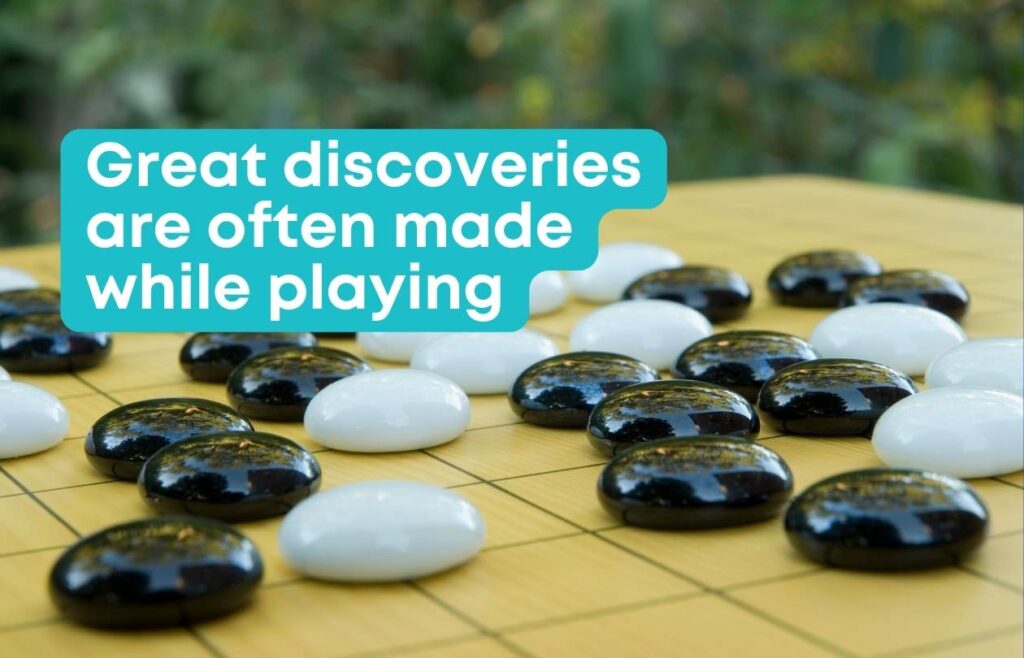
It turns out that QR codes were invented by Japanese engineer Masahiro Hara in 1994. He wanted to simplify the lives of warehouse employees by eliminating the need to scan multiple barcodes on equipment boxes.
The idea came to him during a lunch break while he was playing the game of Go. He was placing black and white stones on the board, and suddenly it struck him. He saw a new way of transmitting information right in front of him.
Compared to traditional barcodes, Hara’s invention could hold 200 times more data (7089 digits or 4296 letters) and soon became known as the QR code.
At the turn of the century, Masahiro Hara didn’t anticipate that he had made a discovery that would soon become a gateway between the real and virtual worlds. But now, millions of people around the world use QR codes. They can be used for traveling, dining in cafes and restaurants, selecting and ordering food, making payments for purchases, and much more.
The Early Days of QR Codes
Naturally, QR codes were initially used in the industry for which they were invented: the automotive industry. This greatly reduced the time required to perform various tasks, from manufacturing to delivery and issuing payment receipts.
Later on, as people began to demand transparency in production and tracking of goods, companies producing products, pharmaceuticals, and contact lenses started using QR codes.
In 2000, QR codes started being used in other fields as well. For example, in Japan, codes appeared on horse racing betting cards, allowing people to quickly find out the names of the winners.
In 2005, a Chinese company registered the national standard for QR codes and released the first mass application for reading them.
But this was just the beginning, and to be honest, it was a slow start. At that time, scanning QR codes was not as easy as it is now. The camera sensors of most smartphones barely exceeded three megapixels. Scanning QR codes on such devices was almost as difficult as playing darts with your eyes closed. So, the widespread use of QR codes had to wait another five years.
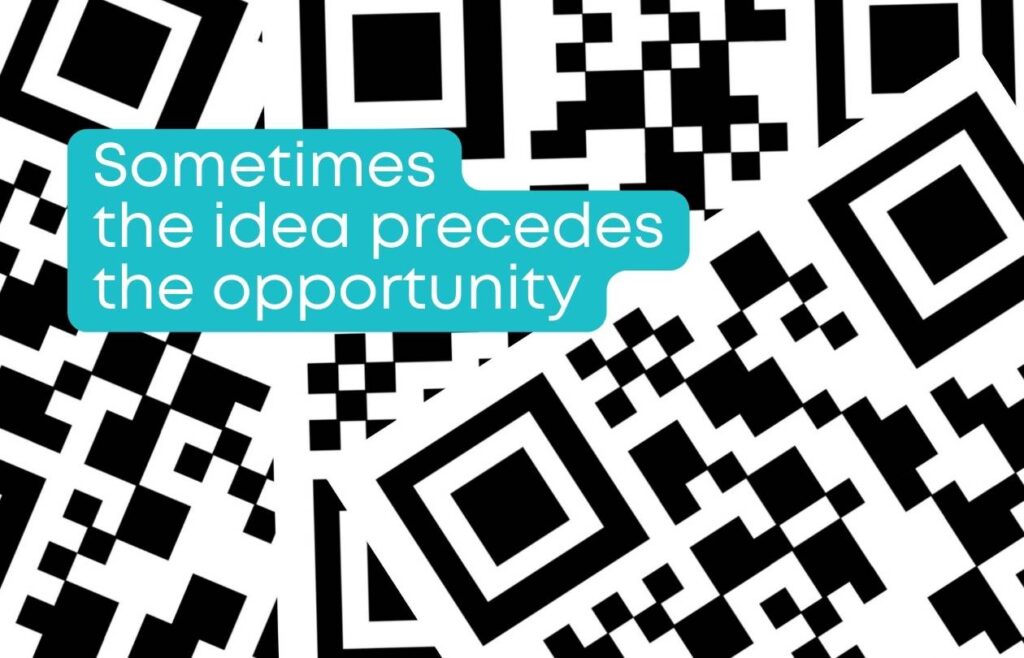
Once smartphone technology began to advance, persistent QR codes started making their way back into the market. Pop culture was the first to respond to this, of course.
How QR Codes Fought for Dominance
In 2010, the New York Times decided to feature a giant QR code on the cover of its December issue. The QR code was made up of 1,000 real balloons, confetti, and streamers! When scanned, this QR code directed readers to the New York Times website, specifically the “Year in Ideas” section. Previously, in 2005, QR codes had already appeared on the cover of The Sun magazine, but not on such a grand scale.
QR codes then made their way into the world of high fashion, appearing on silicone bracelets that could be used as business cards and even on building facades.
Cookies with QR codes were handed out at Tiffany during New York Fashion Week. They were even printed on Barbie dolls!
Soon, a massive QR code appeared on the rooftop of Facebook headquarters and on advertising banners in Times Square. Museums started incorporating them into their exhibitions, and practically every respectable city landmark acquired its own QR code.
But…
Ha-ha, you noticed, even here there is that ubiquitous “but”!
According to statistics, only 1.77% of visitors and passersby took the extra seconds to scan the QR code.
And that’s because mass software for scanning QR codes on Android and Apple devices only became available in 2017.
How QR Codes Were Laid to Rest
In 2012, there was a sudden loss of faith in QR codes. Many even called it a marketing dinosaur that would soon go extinct, just like many overhyped inventions before it. And it seemed like everything was leading to that outcome.
Quite literally. Because at some point, QR codes started being actively used in… interactive tombstones! One American company even created personalized pages for deceased individuals and placed QR code links on grave markers in the form of black-and-white squares.
Sounds eerie. Well, moving on.
In any case, QR codes didn’t last long as conduits to the afterlife. In 2011, WeChat was launched in China (a local equivalent of WhatsApp), where users were offered the ability to create QR cards with personal information that could be used as digital business cards. Additionally, WeChat Pay, the platform’s internal payment system, allowed users to make purchases by scanning codes in stores or cafes.
Feeling a familiar vibe?
By 2020, the WeChat user base had reached around 1.2 billion active users. QR codes became incredibly popular in China. In the village of Silinxui, they even opened an entire garden dedicated to QR codes! They planted 130,000 Chinese junipers in the shape of… you guessed it, a QR code.
How QR Codes Experienced a Renaissance
Like sushi, porcelain, silk, green tea, and many other wonderful things, QR codes made a comeback to the West alongside tourists from Asia. And although the West still tried to communicate in the language of words, it was just a matter of time.
Many renowned artists started actively incorporating QR codes into their works. In 2018, an anonymous artist collective in New York called MoMAR opened an augmented reality exhibition in the Jackson Pollock Room at MoMA, New York. Although, they did it without the permission of the MoMA management…
Two hours before closing, they infiltrated the Jackson Pollock exhibition and turned the artist’s paintings into QR codes using a special app.
The artists’ installation is called “Hello, we’re from the internet.” They created an app for Google Play and the App Store, where Pollock’s abstract paintings “came alive” in augmented reality (AR). And it was really cool!
Speaking of augmented reality, as a creative director, I am closely connected to this technology. We often use it in our PR solutions. I can’t help but notice that it is not only closely related to QR codes but also partially shares a similar fate.
In any case, augmented reality was also forgotten for a few years after its invention. Mostly because, like with QR codes, the mass adoption of augmented reality was hindered by the lack of mobile device capabilities.
However, I now see augmented reality experiencing a literal rebirth. It feels more like a triumphant resurgence, to be honest.
But let’s get back to QR codes.
Why QR Codes Will Take Over the World?
In reality, they already have. They have permeated virtually every industry. Just take a closer look, QR codes are ABSOLUTELY everywhere.
QR codes have the potential to take over the world for several reasons:
- Universality: QR codes can contain various types of information, including text, URL addresses, contact details, geographic coordinates, and more. This enables their utilization in various industries and fields, ranging from advertising and marketing to logistics and medicine.
- Ease of use: QR codes can be quickly generated and printed on various surfaces, such as product packaging, business cards, tickets, etc. Users can easily scan the codes using their mobile devices and access additional information or perform specific actions.
- Mobile accessibility: Modern smartphones allow users to scan QR codes using built-in cameras or dedicated apps. This makes QR codes convenient and accessible to billions of users worldwide, regardless of the operating system.
- Increased interaction: QR codes have the capability to enhance interaction with consumers. For instance, they can facilitate the provision of supplementary product information, facilitate surveys, gather feedback, or present exclusive promotions and discounts.
- Efficiency and trackability: QR codes enable organizations to efficiently track the results of their marketing and advertising campaigns. They can provide data on the number of scans, location, and other parameters, helping to analyze the effectiveness of activities and take appropriate measures.
Overall, QR codes provide a powerful tool for information transmission, audience interaction, and increased efficiency in various processes. Therefore, they have the potential to take over the world and become an integral part of everyday life.
We value our time too much to spend a long time sharing new information with people. Now, we have QR codes for that.
QR Codes and Their Design
Many people believe that QR codes must always be black on a white background. I used to think the same way. But it turns out, that’s not entirely true.
Certainly, there must be a contrast between the dots and the background; otherwise, how can one scan them? However, this doesn’t mean that QR codes have to be monochrome.
Furthermore, they don’t even have to be square!
I discovered that most modern online editors, which can turn any link into a QR code, allow you to customize not only its color but also its shape! There are countless options available. You can even insert a slogan, logo, or fun icon into the center of the QR code!
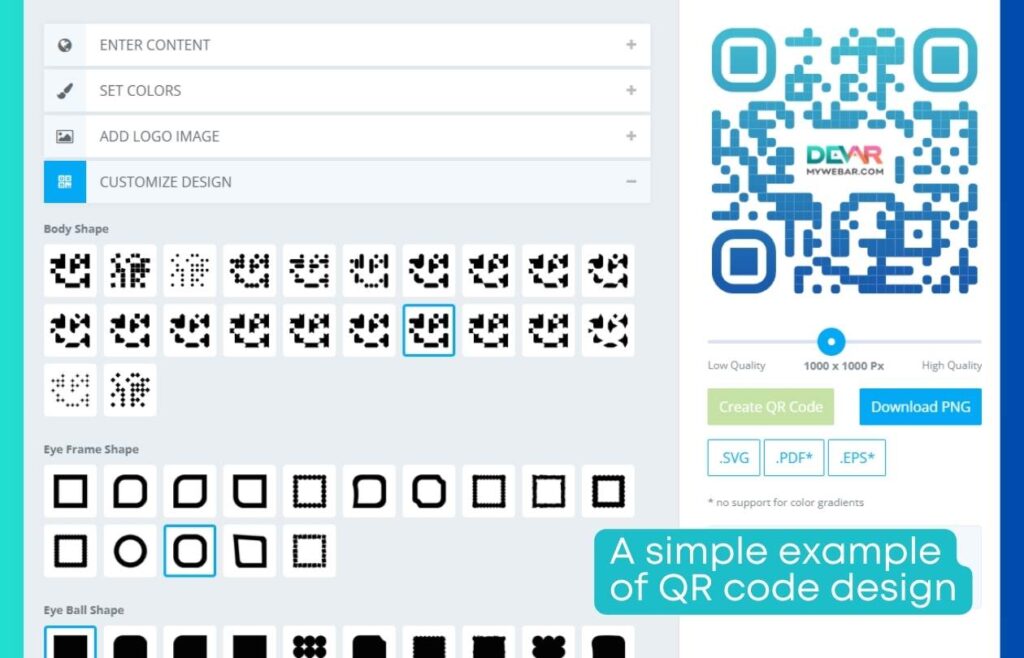
By the way, the no-code platform DEVAR (MyWebAR) also has a QR code editor. However, if you need more creativity for your design, simply copy the link to your project and convert it into a QR code using any convenient tool for you.
However, the main thing that many people forget (or almost everyone who uses QR codes, to be honest) is that there should always be a call to action next to the QR code.
Aside from jokes, I’m absolutely serious right now.
QR Codes and Motivation
Yes, it’s not 2005 anymore, and almost everyone knows what to do with a QR code. Scan it! But not everyone knows what they will get from this action. And that’s why not everyone wants to do it. After all, sometimes, let’s admit it, we’re just lazy.
But if I know in advance what I will get after scanning – an advertisement banner, cool content, a game, or just a regular website visit – then my attitude towards this process can significantly change.
If your QR code leads to something truly cool, please don’t skimp on a motivational slogan next to it. Personally, I don’t always want to spend time visiting a website. But playing a game or getting a nice discount – I’m unlikely to refuse. How about you?
This is precisely why we require motivational slogans. Use them to convey a message to your user, make them fall in love with your product, and at the same time “capture” them for retargeting purposes.
Some simple (but effective) examples of motivational slogans could be: “Scan and play!” or “Scan to see the magic!”
Motivational slogans can create curiosity, excitement, and a sense of reward for scanning the QR code. They encourage users to take action and engage with the content or experience you offer. So don’t underestimate the power of a well-crafted motivational slogan next to your QR code.
QR Codes and Absurdity
The most important thing to remember when working with QR codes is not to take their use to the point of absurdity.
I heard that recently at a Japanese train station, they digitized the train schedule by simply cramming it into QR codes. So, you’re standing at the station and instead of seeing the schedule, you just see a giant QR code.
Excuse me, what?
In my opinion, that’s a bit much. It certainly isn’t convenient for everyone. Plus, what if your phone runs out of battery or you have issues with internet connectivity? What then?
Additionally, it’s important to consider security. We all know how dangerous unknown links can be: scammers can steal your data or show you inappropriate or shocking content. Well, the same can happen with QR codes.
That’s why it’s necessary to approach their use and placement more seriously and attentively, rather than simply haphazardly slapping them anywhere.
My Conclusions About QR Codes
After conducting this research, I feel much better. I have realized that I am not a neophobe, as I almost became one thanks to Chloe’s influence. (Although deep down, I understand that she was trying to redirect my anger in the right direction with her words.)
I simply don’t like it when I’m given a raw product. That’s all. Placing a black-and-white QR code on a coffee shop table is nothing but a raw product. You can call me a snob if you want.
But there are so many wonderful opportunities now to make interacting with QR codes an engaging and useful experience! And instead, I am simply offered a PDF to open.
Well, of course, I get angry! At least with the old menu, I could touch it with my hands.
In other words, if you have decided to keep up with the times and make your menu digital, then please, go all out! Add videos or AR experiences to allow customers to see your dishes. Include art objects or fun interactions like games or daily wishes.
Here are a couple of quick ideas of what you can do with a pizza box using QR code and AR:
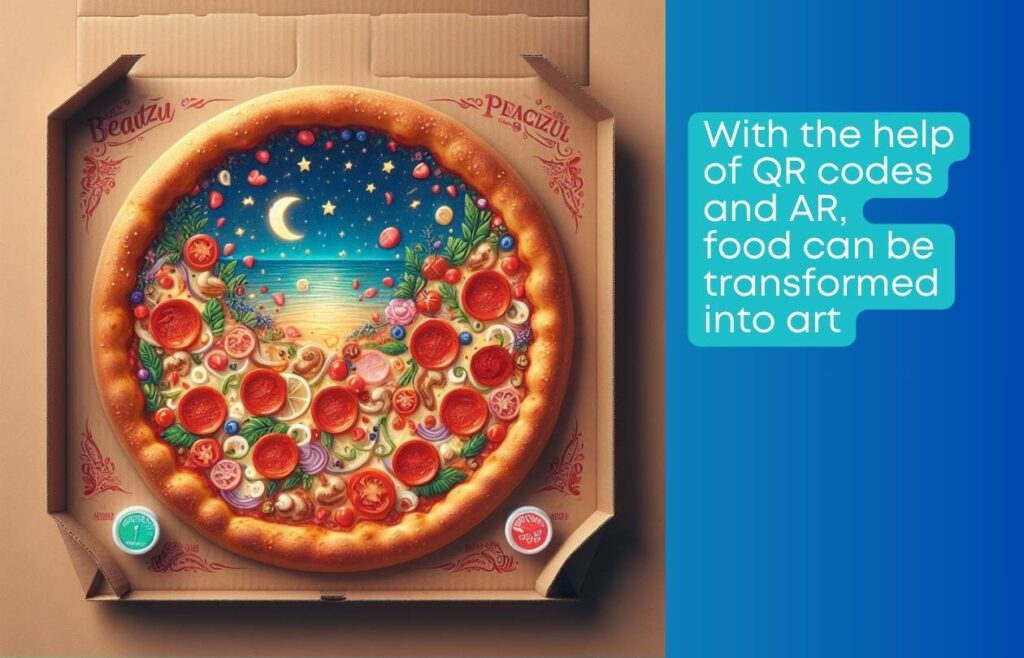
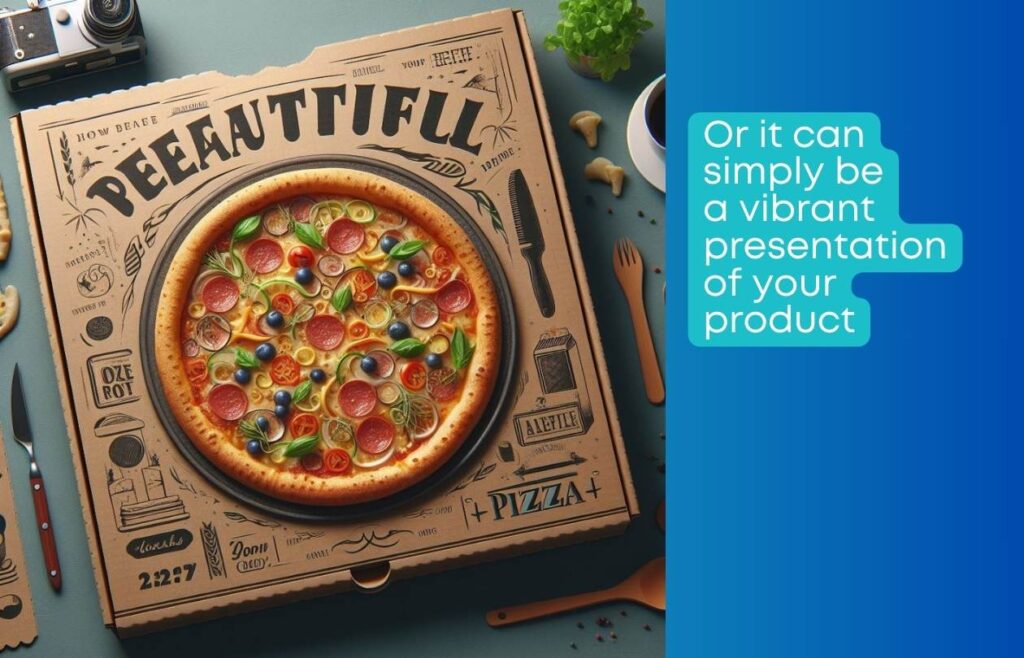
Because right now, everybody hates QR codes! But… actually, they are great. You just need to find a creative approach to them and use them correctly.
Give it a new form. Transform it into something unique and engaging. Give it a cool design with a captivating motivational slogan, in the end!
…and what it all came to.
If you’re scratching your head wondering how this story ended, let me tell you right now.
Not only did our new project, as Chloe promised, turn out to be closely related to the creative use of QR codes in a marketing campaign for a major brand, but she also took me to a restaurant with excellent steaks in the evening, where, as you may have guessed, I got to experience completely new sensations from interacting with a digital menu.
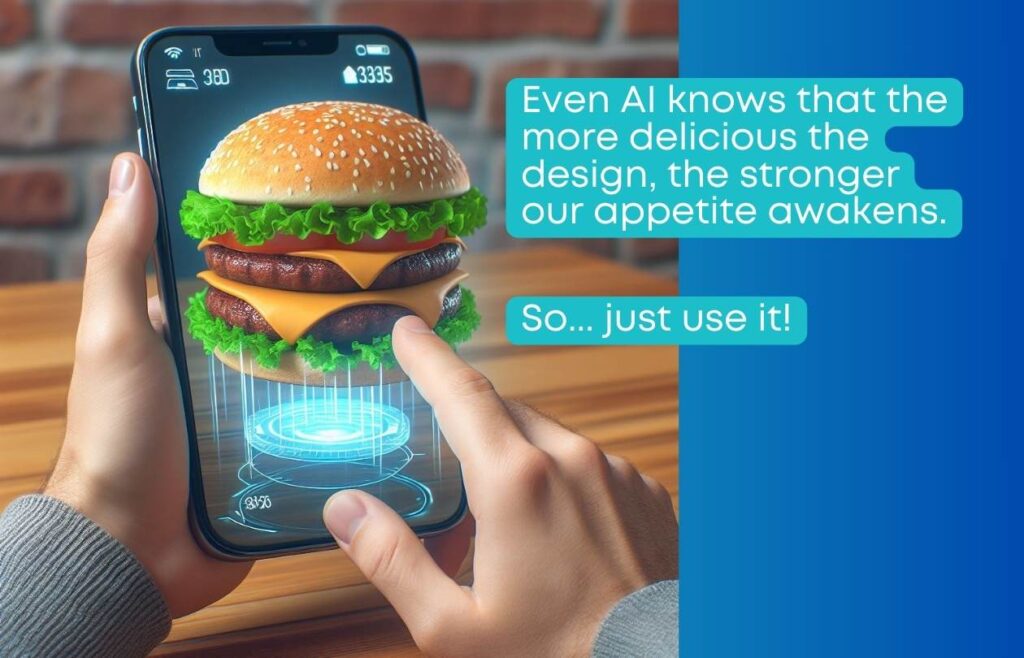
First of all, with the help of clever augmented reality and very high-quality and realistic 3D models (I suspect they were made using 3D scanning or something similar), this menu took the demonstration of dishes to a whole new level. It’s not just a photo of a dish from one angle! It’s the opportunity to assess its future presentation and serving from all sides, to literally visualize it in front of you and understand what do I want more? A well-cooked steak or BBQ ribs? Vegetables or potato salad? The main thing is not to drool during the process.
And secondly, after interacting with this AR experience, I came up with so many new ideas for our future projects! But that’s a whole different story.
Sincerely yours, Sean Cooper
